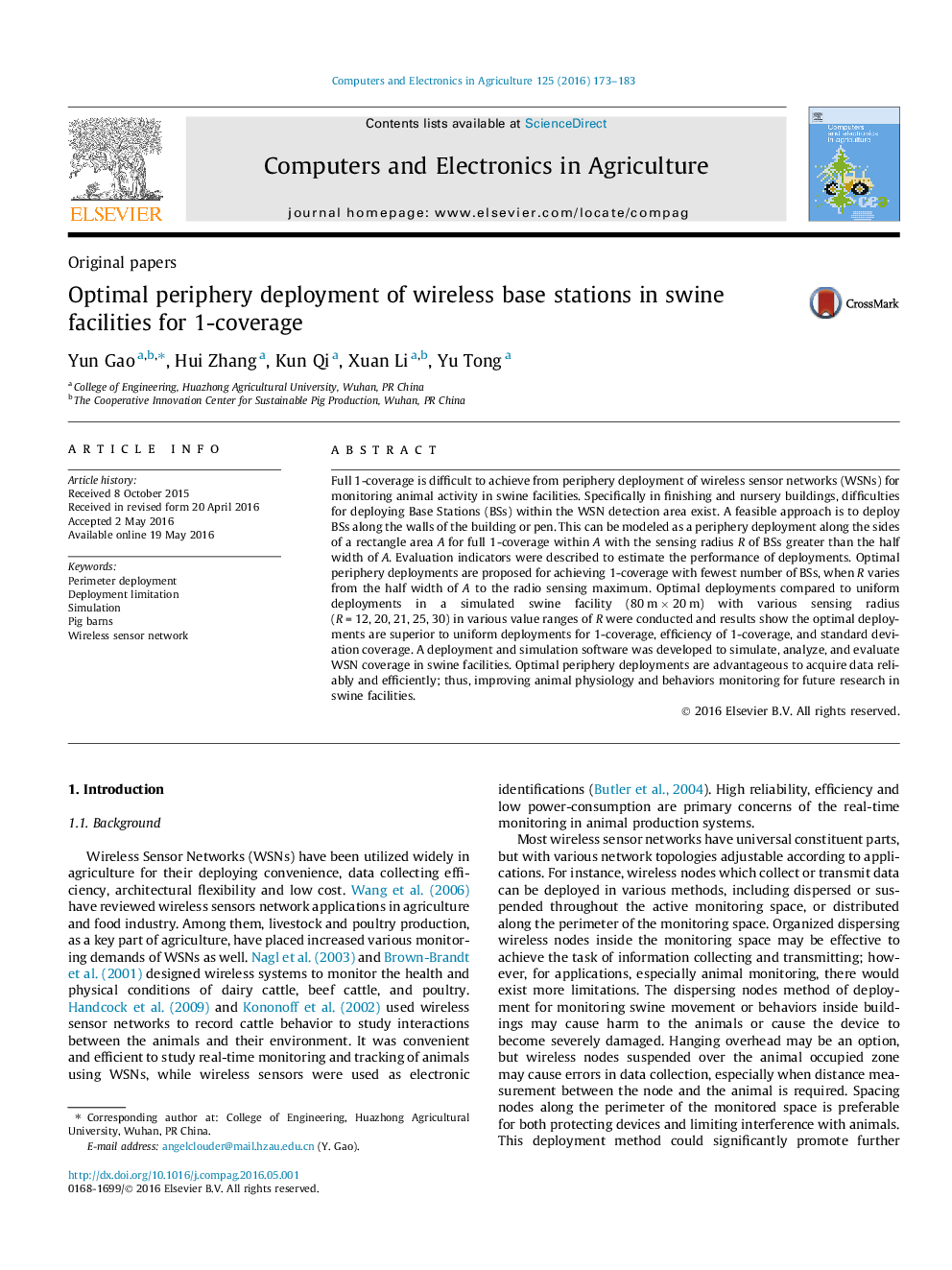| Article ID | Journal | Published Year | Pages | File Type |
|---|---|---|---|---|
| 6540359 | Computers and Electronics in Agriculture | 2016 | 11 Pages |
Abstract
Full 1-coverage is difficult to achieve from periphery deployment of wireless sensor networks (WSNs) for monitoring animal activity in swine facilities. Specifically in finishing and nursery buildings, difficulties for deploying Base Stations (BSs) within the WSN detection area exist. A feasible approach is to deploy BSs along the walls of the building or pen. This can be modeled as a periphery deployment along the sides of a rectangle area A for full 1-coverage within A with the sensing radius R of BSs greater than the half width of A. Evaluation indicators were described to estimate the performance of deployments. Optimal periphery deployments are proposed for achieving 1-coverage with fewest number of BSs, when R varies from the half width of A to the radio sensing maximum. Optimal deployments compared to uniform deployments in a simulated swine facility (80 m Ã 20 m) with various sensing radius (R = 12, 20, 21, 25, 30) in various value ranges of R were conducted and results show the optimal deployments are superior to uniform deployments for 1-coverage, efficiency of 1-coverage, and standard deviation coverage. A deployment and simulation software was developed to simulate, analyze, and evaluate WSN coverage in swine facilities. Optimal periphery deployments are advantageous to acquire data reliably and efficiently; thus, improving animal physiology and behaviors monitoring for future research in swine facilities.
Keywords
Related Topics
Physical Sciences and Engineering
Computer Science
Computer Science Applications
Authors
Yun Gao, Hui Zhang, Kun Qi, Xuan Li, Yu Tong,
